Learning Objectives:
- To understand basics of computers.
- To develop logic for Problem Solving and their implementation using C++.
- To understand and implement the concept of Object Oriented Methodology.
- To understand the concept of working with Relational Database.
- To understand the basic concept of Computing Logic.
- To understand the basic concepts of Communication and Networking technologies.
- To understand Open Source concepts
Important highlights of CBSE Class 12 Computer Science Syllabus 2018-19 are given below
Class 12 (Theory) – Python | Duration 3 Hours | Total Marks: 70
|
1 |
Object Oriented Programming with Python |
24 |
|
2 |
Advanced Programming with Python |
20 |
|
3 |
Database Management System and SQL |
8 |
|
4 |
Boolean Algebra |
8 |
|
5 |
Communication Technologies |
10 |
|
Total |
70 |
|
Unit 1: Object Oriented Programming with Python (50 theory + 40 practical) periods
Concept of Object Oriented Programming: Data Hiding, Data Encapsulation, Class and Object,
Polymorphism, inheritance, advantages of Object Oriented Programming over earlier programming methodologies,
Classes: Defining classes (attributes, methods), creating instance objects, accessing attributes and methods, using built in class attributes (dict, doc, name, module, bases), Constructor( __init()_ _, _ _del()_ _ and _ _ str()_ _) methods in a class, private attributes (limited support), importance of “self” (acts as a pointer to current calling object) operator overloading with methods.
Inheritance:
Concept of base class and derived class: Single, multilevel and multiple inheritance- Overriding methods, using super( ) in derived class to invoke _ _init()_ _ or overridden methods of parent class.
CBSE Syllabus 2017-18 for Class 12 Physical Education
Unit 2: Advance Programming with Python (42 Theory + 36 Practical) Periods
Linear List Manipulation: Sequential allocation, traversal,insertion of an element in a sorted list, deletion of an element from the list, searching (linear, binary), sorting (insertion, selection, bubble).
Stacks (List Implementation): Introduction to stack (LIFO Operations), operations on stack (PUSH and POP ) and its implementation in python.
Converting expression from infix to postfix notation and evaluation of postfix expression.
Queues (List implementation) – Introduction to Queue(FIFO) , Operations on Queue (INSERT and DELETE) and its implementation in Python.
Data File
Need for data file, types of data file–text and binary,opening and closing files-open( ), close( ), access modes (output, input, default), file object, access_modes, reading and writing a file read(), readline(), readlines(), write(), writelines file positions (seek(), tell()), renaming and deleting a file.,flush();
Implementation of basic file operations on text and binary file in Python: Creating/writing data into file, reading and displaying data from file, searching for particular data from a file, insertion and deletion of data from an already existing file, modification of data in file.
Error and Exceptions – NameError, IndexError, TypeError, IO Error, ImportError, ValueError,
EOFError.
Generator function using Yield.
CBSE Syllabus 2017-18 for Class 12 English (Core)
Unit 3: Databases and SQL (20 Theory + 20 Practical) Periods
Data base Concepts: Introduction to data base concepts and its need.
Relational data model: Concept of domain, tuple, relation, key, primary key, alternate key, candidate key;
Relational algebra: Selection, Projection, Union and Cartesian product;
Structured Query Language:
General Concepts: Advantages of using SQL, Data Definition Language and Data Manipulation
Language;
Data Types: NUMBER/DECIMAL, CHARACTER/VARCHAR/VARCHAR2, DATE;
SQL COMMANDS: CREATE TABLE, DROP TABLE, ALTER TABLE, UPDATE ….SET…., INSERT, DELETE;
SELECT, DISTINCT, FROM, WHERE, IN, BETWEEN, GROUP BY, HAVING, ORDER BY;
SQL functions: SUM ( ), AVG ( ), COUNT ( ), MAX ( ) AND MIN ( ); Obtaining results (SELECT query) from 2 tables using equi-join, Cartesian product and Union
Note: Implementation of the above mentioned commands could be done on any SQL supported software on one or two tables.
Unit 4: Boolean Algebra (16 Theory + 0 Practical) Periods
Role of Logical Operations in Computing.
Binary-valued Quantities, Boolean Variable, Boolean Constant and Boolean Operators: AND, OR, NOT; Truth Tables; Closure Property, Commutative Law, Associative Law, Identity law, Inverse Law, Principle of Duality, Idempotent Law, Distributive Law, Absorption Law, Involution Law, DeMorgan’s Law and their applications;
Obtaining Sum of Product (SOP) and Product of Sum (POS) form the Truth Table, Reducing Boolean
Expression (SOP and POS) to its minimal form, Use of Karnaugh Map for minimization of Boolean expressions (up to 4 variables);
Application of Boolean Logic: Digital electronic circuit design using basic Logic Gates (NOT, AND, OR, NAND, NOR)
Use of Boolean operators (NOT, AND, OR) in SQL SELECT statements
Use of Boolean operators (AND, OR) in search engine queries.
Unit 5: Communication Technologies (16 Theory + 3 Practical) Periods
Evolution of Networking: ARPANET, Internet, Interspace Different ways of sending data across the network with reference to switching techniques (Circuit and Packet switching).
Data Communication terminologies: Concept of Channel, Bandwidth (Hz, KHz, MHz) and Data transfer rate (bps, Kbps, Mbps, Gbps, Tbps).
Transmission media: Twisted pair cable, coaxial cable, optical fiber, infrared, radio link, microwave link and satellite link.
Network devices: Modem, RJ45 connector, Ethernet Card, Router, Switch, Gateway, wifi card.
Network Topologies and types: Bus, Star, Tree, PAN, LAN, WAN, MAN.
Network Protocol: TCP/IP, File Transfer Protocol (FTP), PPP, SMTP, POP3 Remote Login (Talent), and Internet Wireless/Mobile Communication protocol such as GSM, CDMA, GPRS, and WLL.
Mobile Telecommunication Technologies: 1G, 2G, 3G and 4G; Mobile processors;
Electronic mail protocols such as SMTP, POP3
Protocols for Chat and Video Conferencing VOIP
Wireless technologies such as Wi-Fi and WiMax
Network Security Concepts:
Threats and prevention from Viruses, Worms, Trojan horse, Spams
Use of Cookies, Protection using Firewall, https;
India IT Act, Cyber Law, Cyber Crimes, IPR issues, hacking.
Introduction To Web services: WWW, Hyper Text Markup Language (HTML), Extensible Markup
Language (XML); Hyper Text Transfer Protocol (HTTP); Domain Names; URL; Website, Web browser, Web Servers; Web Hosting, Web Scripting – Client side (VB Script, Java Script, PHP) and
Server side (ASP, JSP, PHP), Web 2.0 (for social networking)
E-commerce payment transactions using online banking, mobile banking and payment apps and services
Class 12 (Theory) – C++ | Duration: 3 hours | Total Marks: 70
|
Unit No. |
Unit Name |
Marks |
|
1. |
OBJECT ORIENTED PROGRAMMING IN C++ |
30 |
|
2. |
DATA STRUCTURE |
14 |
|
3. |
DATABASE MANAGEMENT SYSTEM AND SQL |
8 |
|
4. |
BOOLEAN ALGEBRA |
8 |
|
5. |
COMMUNICATION TECHNOLOGIES |
10 |
|
Total |
70 |
|
Unit 1: Object Oriented Programming in C++ (50 Theory + 40 Practical) Periods
REVIEW: C++ covered In Class – XI,
Object Oriented Programming: Concept of Object Oriented Programming – Data hiding, Data encapsulation, Class and Object, Abstract class and Concrete class, Polymorphism
(Implementation of polymorphism using Function overloading as an example in C++); Inheritance, Advantages of Object Oriented Programming over earlier programming methodologies, Implementation of Object Oriented Programming concepts in C++: Definition of a class, Member of a class – Data Members and Member Functions (methods), Using Private and Public visibility modes, default visibility mode (private); Member function definition: inside class definition and outside class definition using scope resolution operator (::); accessing members from object (s), Objects as function arguments–pass by value and pass by reference;
Constructor and Destructor: Constructor: special characteristics, declaration and definition of a constructor, default constructor, overloaded constructors, copy constructor, constructor with default arguments;
Destructor: Special Characteristics, declaration and definition of destructor;
Inheritance (Extending Classes): Concept of Inheritances, Base Class, Derived classes, protected visibility mode; Single level inheritance, Multilevel inheritance and Multiple inheritance, Privately derived, publicly derived and Protectedly derived class, accessibility of members from objects and within derived class (es);
Data File Handling: Need for a data file, Types of data files – Text file and Binary file;
Text File: Basic file operations on text file: Creating/Writing text into file, Reading and
Manipulation of text from an already existing text File (accessing sequentially).
Binary File: Creation of file, Writing data into file, Searching for required data from file,
Appending data to a file, Insertion of data in sorted file, Deletion of data from file, Modification of data in a file;
Implementation of above mentioned data file handling in C++;
Components of C++ to be used with file handling:
Header file: fstream.h; ifstream, ofstream, classes;
Opening a text file in—in, out, and app modes;
Using cascading operators (>>,<<) for writing text to the file and reading text from the file; open
(), get (), read (), put (), write(), getline() and close() functions; Detecting end-of-file (with or without using eof() function), tellg(), tellp(), seekg(), seekp();
Pointers:
Introduction to Pointer, Declaration and Initialization of Pointer; Dynamic memory allocation/deallocation operators: new, delete; Pointers and Arrays: Array of Pointers, Pointer to an array (1 dimensional array), Function returning a pointer, Reference variables and use of alias; Function call by reference. Pointer to structure: De-reference/Deference operator: *, ->; self referential structure;
CBSE Syllabus 2017-18 for Class 12 Business Studies
Unit 2: Data Structures (42 Theory + 36 Practical) Periods
Introduction to data structure- array, stack queues primitive and non-primitive data structure, linear and non-linear structure, static and dynamic data structure.
Arrays:
One and two Dimensional arrays: Sequential allocation and address calculation;
One dimensional array: Traversal, Searching (Linear, Binary Search), Insertion of an element in an array, deletion of an element from an array, Sorting (Insertion, Selection, Bubble)
Two-dimensional arrays: Traversal Finding sum/difference of two NxM arrays containing numeric values, Interchanging Row and Column elements in a two dimensional array;
Stack (Array and Linked implementation of Stack):
Introduction to stack (LIFO: Last in First out Operations)
Operations on stack (PUSH and POP) and its Implementation in C++, Converting expressions from
INFIX to POSTFIX notation and evaluation of Postfix expression;
Queue: (Array and Linked Implementation)
Introduction to Queue (FIFO: First in First out operations)
Operations on Queue (Insert and Delete and its Implementation in C++, circular queue using array.
Unit 3: Database Management System and SQL
Common to both the options. Refer to unit 3 DATABASE AND SQL mentioned in case of Python for further details.
Unit 4: Boolean Algebra
Common to both the options. Refer to unit 4 mentioned in case of Python for further details.
Unit 5: Networking and Open Source Software
Common to both the options. Refer to unit 5 COMMUNICATION TECHNOLOGIES mentioned in case of Python for further details.
Tips
- The key to a successful Computer Science exam is understanding. As majority of the question paper is based on programming, the only way to score is by having a thorough understanding of programming
- Create your own notes for the important terms and concepts after you understand them. The given notes in a book would be good for learning but for revision your notes will give you the exact information you need
- Clear any doubts you have as soon as you can. Use your Class 11th computer science books or reference books to clear your doubts, but the best solution would be to ask a teacher
- Practice all the exercises and questions available in your text book
- Use flashcards to remember definitions
- Remember to study definitions and their basic applications thoroughly, questions often arise asking for explanations of topics
- Create flowcharts to help you understand and remember programming
- When you practice writing programs try to maintain the required spacing, even if you are answering only in rough. Getting into the habit of writing according to the proper spacing will help you
- If you have time use different color pens/pencils for different areas to help you visually remember them
- Pay attention during practical classes, this will help you score high in the practical marks section which is worth 30 marks and also help clear your doubts
- Revise by practicing programming on a Computer, you will immediately find out where you stand in terms of how many programs you can successfully write/run
- Charts are helpful when you are preparing for Boolean Algebra
- Pay attention to details, a single misplaced punctuation mark can ruin an entire answer
- Practice sample papers/previous year papers to understand the pattern, test your preparation and identify your weak areas
- Remember to always correct the papers you attempt so you can find and improve your weak areas
No matter if you choose to become a Computer programmer or a Doctor, basic knowledge of Computer Science will always be an added benefit. Use logic and understanding and your Class 12th Computer Science exam will be over before you know it.

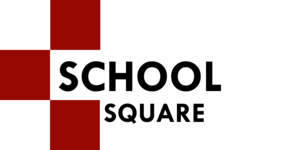

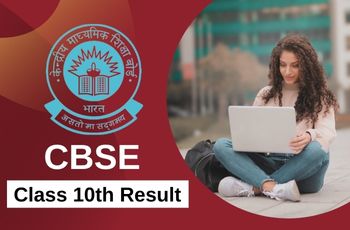
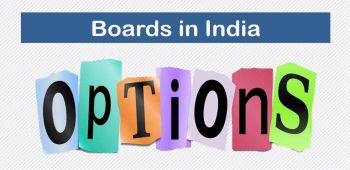
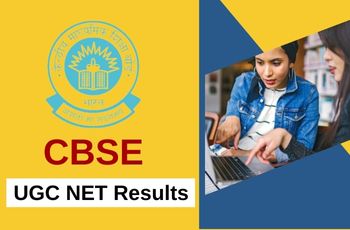










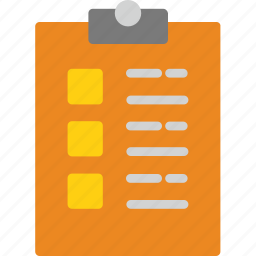

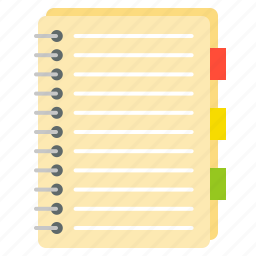
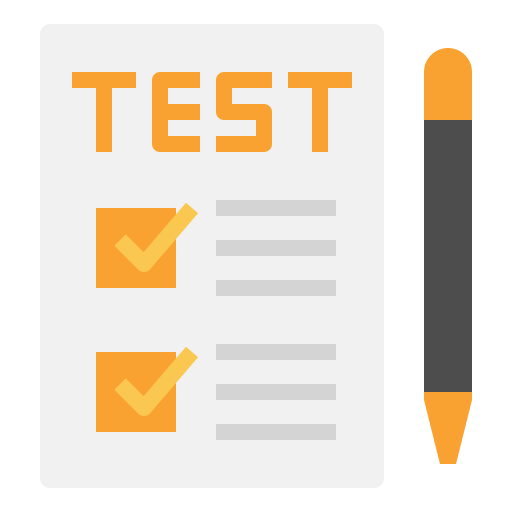
Comments